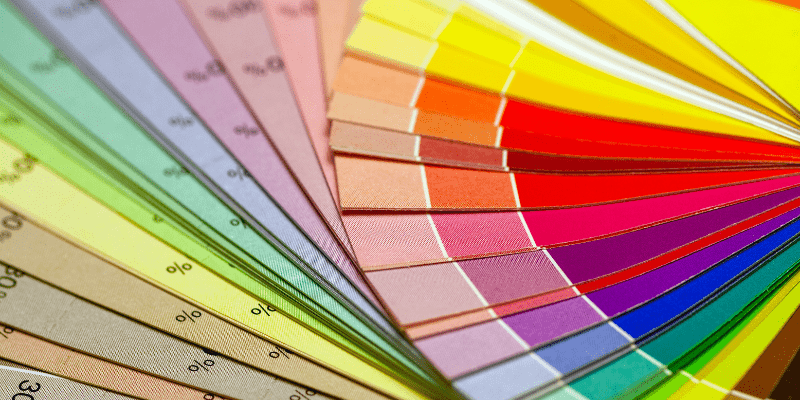Last Updated on April 19, 2024 by Packoi Team
What does it take to create a successful catalog design? You have to understand your options and the different rules that you should follow.
It’s important to keep in mind that catalogs vary from one business to another. You have to find the balance between what’s aesthetically appealing, 100% informative, and the perfect representation of your brand.
In this article, you’ll learn more about what it takes to design the perfect business catalog and the important rules that you have to follow.
The Importance of Having the Right Catalog Design

A catalog is an effective brand marketing tool. Its primary purpose is to spread awareness about your brand and the products or services that you sell.
The catalogs create interest in your business. This is why you need more careful consideration for the design process.
There are three main things to consider here.
First, the catalog should represent your brand and products beautifully. From the front cover and introduction pages to the back cover, every page, format, and style should present your brand well.
Second, the catalog should be functional. Provide a clear and complete product description so your clients will know what you offer. Usually, the people holding your business catalog are already half-sold. They’re just confirming details. So, make sure they find the information they need within.
Third, the catalog should be aesthetically appealing. Don’t use low-resolution photos. Invest in taking high-quality product images. Not only that, but the graphic design should also be visually appealing.
3 Benefits of a Printed Business Catalog
A catalog can come in 2 forms. One is in print and the other is digital. Both of these have their respective pros and cons. But since this article is specific to print catalogs, here are 3 benefits that put it ahead of digital catalogs.
Steady Brand Exposure
Catalogs, in general, provide brand exposure. But when it comes in digital form, your catalog won’t always be open. Once the tab or app is closed, the catalog may be forgotten.
But if your catalog is printed, it continues to provide steady brand exposure. At least, as long as it’s on a visible place – like the kitchen counter or on top of a coffee table. Every time your target audience sees it, they’re reminded of your brand – and they might even be enticed to buy again.
Easier to Browse
Another benefit of having printed catalogs is they’re easier to use. People can easily sift through the pages to see the different products or services that you offer.
In this case, they can fold the top part of the page so they can go back to pages of interest with ease.
But even if the customer has to browse through the catalog page by page, it’s still good for you. They can keep seeing the same products – and they might just change their minds about buying multiple products from you.
Readable
Readability is also a great benefit that your clients can enjoy. But they’re not the only ones who’ll have an easier time.
If you have salespeople using the print catalog to explain what your business offers, it’s easier to do the presentation using a catalog. They can give the catalog to the potential buyer and hold another copy of their own. That way, readability is easier because the customer can examine the catalog they’re holding while you hold your copy for reference.
There’s no need to worry that someone will accidentally click the wrong thing.
3 Crucial Elements of a Product Catalog

The great thing about a catalog design is you’re free to put whatever you like in it. You get to decide how many pages there are and what to print on the inner pages.
While you have the freedom in the design, there are important elements to product catalogs that you need to be aware of. Falling short of any of these elements might make your catalog more of a pamphlet or brochure.
Here are the crucial elements that you should ensure your print catalog should have.
Product Information
The main reason your target market browses catalogs is to look at your products. Give them the information that they need so they can order the right product.
This means providing a complete list of product data that includes:
- Product codes – the unique SKU and item number or identification
- Product names – the assigned name given to the product
- Product descriptions – the features of the product
- Variants – the different variations of the product (e.g., colors, flavor, design, sizes, etc.)
- Attributes/materials – the extension of the product features that focus on what the product is made of
- Categories/subcategories – the group to which the product belongs to
- Prices – the cost to buy the product
Product Photos
Make sure the product images that you’ll provide can give the customers a clear idea of what they’re getting.
If you can produce your images, it’s advised to hire a professional photographer to take the photos for you. If you don’t have the budget for it, make sure you know how to take proper product shots. It should be high-quality photos taken with the right lighting and setup.
Although there’s no rule against using free images that you can get off the Internet, it’s not advised. It might not give justice to the actual product that you’re selling.
In case your catalog wishes to showcase your service offers, it might be better to recreate service shots so customers can see your team in action. It’s more authentic that way.
Product Catalog Layout
Once you have both product information and images, it’s time to put them all together.
It’s ideal to hire a professional to do the catalog design layout for you. But there are also a lot of tools available that’ll allow you to do it on your own. These tools have enough guidelines and templates that you can use to come up with a good catalog design.
You can also ask the printer if they have software that you can use. That way, anything that you come up with they can easily pull out for printing.
Among the layouts that you have to work on include:
- Front and back cover
- Introduction pages
- Table of contents
- Product chapters
- Company or brand information
You can add multiple pages if you wish – or you can keep it as concise as possible.
10 Rules to Follow When Creating Your Catalog Design

As you plan the catalog design, there are a couple of rules that you have to follow. These rules will ensure that you’ll end up with a catalog that’s not just aesthetically appealing. It can also help you get more customers to buy from you.
Here are 10 of the rules that you have to follow.
1. Focus on Lifestyle Aspirations
The best way to start your catalog is to let it be a representation of what your clients want to have in life. To be specific, it should show how your products or services will help them achieve that.
So, if you’re a retail brand selling clothes to women, you want your catalog design to be filled with beautiful and happy women who look good in what they’re wearing.
If you’re selling men’s perfume, show images of confident men wearing sharp suits – maybe standing beside a fancy car.
Let every image, text, and design show your target clients that your product is a great way to achieve their lifestyle aspirations.
2. Match Customer Preferences
Your catalog design should appeal to the preferences of your customers. Think about what they want to see in your catalog.
Do they want more photos? More information about the product?
What about the number of pages? Do they want multiple pages or just a few, like four pages?
Do they prefer a catalog printed on higher-quality paper stock?
Organize products so it will make the customer read the catalog from the front cover to the back.
3. Invest in the Best Product Photos
The images that you’ll use in your catalog should be the best ones that you can find. It doesn’t matter what products and services you’ll put in there. It has to be visually appealing.
This is why you have to consider hiring a professional to take the photos for you. Or if the budget can’t afford that, do it in-house but make sure the person taking the photo has a better understanding of the product. They have to be able to show the best features of what’s being showcased.
You have the option to get web images – as long as it looks authentic. If not, just do the photos yourself.
4. Highlight the Products
The images, fonts, and layout of your catalog design should be all about the product. After all, the main goal is to increase sales. So, make sure that the highlight is always on the products or services.
Every paper should show the best features of what your business offers. While some businesses try to save money by grouping products together, that’s not always advised.
It’s still easier for customers to have them in separate images. The more expensive the product is, the bigger the photo that should be used.
5. Put Appealing Products in the Outer Top Corners
Some customers browse the whole catalog first before they open it one page at a time. This is why you should position appealing products on the outer corner of the pages – specifically the top part.
If your clients get a glimpse of the product, they’ll be enticed to open the whole page to see everything else inside.
6. Give Top Sellers More Exposure
Make a list of all your top-selling items and give that more exposure. If it’s popular among your usual customers, then there’s a higher chance that new ones will buy these as well.
This is a psychological trick that’ll help push your best-selling products more so you can increase your sales and revenue through the catalog you created.
Of course, you have to analyze if the positioning of the product will make a difference. Once your catalogs are distributed, check how they’ll help your sales improve. If there are products that sold more, give them a bigger space in the next catalog that you’ll create.
7. Cross Sell Whenever Possible
Use the catalog design as an opportunity to sell more products. If you have products or services that go well together, make sure they’re seen on the same page.
So, if you have a model wearing a dress, make sure you also include the product descriptions of the footwear, bags, and accessories that are paired with the dress. That way, those seeing it will be encouraged to buy everything on the page.
The same is true if you have high-value products. Put them in areas where they can support other lesser-value products, and vice-versa.
8. Style Your Layout According to Your Brand Image
Make sure you create a catalog that can represent your brand image perfectly. Every page, print, layout, format, style, and image should scream your branding.
The simple things that you can do include adding the logo or using a border theme that can be seen on every page. Use similar elements every time you create a new catalog so people will recognize it as coming from your brand.
Familiarity can help increase your sales.
9. Use Fonts Strategically
When you create a catalog, don’t just focus on the images. Make sure you also pay attention to the font. Use only a couple of fonts and keep them consistent. The style should complement the whole theme of your catalog design.
You can choose a font that you use in your brand, but make sure it won’t overpower the product images. The highlight is still the product. The text is just to support the photos and help clients with their buying decisions.
10. Keep Your Design Within Your Budget
With all the elements included in the catalog design, make sure everything stays within your budget. You don’t want to create a catalog that’s too expensive because you didn’t choose the cost-efficient options.
That means you have to choose the right size, page numbers, materials, binding style, and printer to make sure that you’re using the most budget-friendly options.
5 Must-Have Catalog Pages

Your catalog should have the right content for it to work effectively as a marketing tool. That means you have to ensure that it has the right pages in it. These pages will allow you to organize how the inner pages will look.
Here are 5 of the must-have pages that you should never miss in your catalog.
Cover Pages
This refers to both the front and back covers. You can use minimal designs for the front cover or use them to highlight your high-value products. For the back cover, you can opt to use text to tell your brand or company story.
What’s more important is everything on the cover pages is consistent with the template used inside the catalog.
Table of Contents
This is useful in guiding the readers on what they’ll find inside the catalog. It’s usually printed on the first few pages of the catalog, and it contains a chronological order of what’s on the different pages. There are numbered references so the readers can quickly find the product category of what they want to look at.
Product Pages
This is the meat of the whole catalog. This is where you’ll find all the products and services that you want the customer to see.
When you’re coming up with the layout for these pages, make sure you don’t make them too monotonous. Use two or three templates so the products are showcased differently.
Remember the rule of giving more space to the top sellers. It’s a great way to psychologically push products so your readers will buy them.
Brand Content Pages
These are the pages that’ll focus on your brand story. It’ll contain an explanation about the purpose of the catalog – as well as information about your company and brand.
You can put relevant facts on these pages so the readers will know more about you. The more they get familiar with your story, the more they can relate to you. It’s a great way to establish a connection and build brand loyalty.
If you have advocacies that are related to the product line in the catalog, you can also talk about them here.
Page Dividers
Finally, these dividers are responsible for separating the various sections and categories in your catalog. It’s just a filler so the clients looking at the pages will know what’s next. You can put graphic designs, images, or more product shots in these dividers.
What You Should Know about the Catalog Printing Process

Finding the right printer is just as important as the design process. Make sure you consider a company that has the experience and expertise in printing catalogs. They can help you understand what’s possible when it comes to your catalog design.
But as you discuss your ideas with them, be conscious of your budget. Everything that you discuss and the materials you want to use will affect the printing prices.
Don’t forget to discuss with the printer the number of copies you want to print, the quality of paper, the number of pages, binding options, photo quality, etc.
Always ask for a quote and a mock-up before proceeding with the final printing process.
Let’s Start Designing and Printing Your Product Catalog. Packoi Printing is Here to Assist.
Once you have everything ready for your catalog, it’s time to go to the printer to turn this into reality. If you’re looking for a trustworthy and experienced printing company, Packoi Printing is just what you need.
We’ve been in the industry for a long time, and we can deliver high-quality printing for your catalog. We have the experience, expertise, and machinery to print your catalog based on your expectations.
Let us know your ideas and we can print them into reality. Give us the details and you’ll get a fair quotation in no time.




